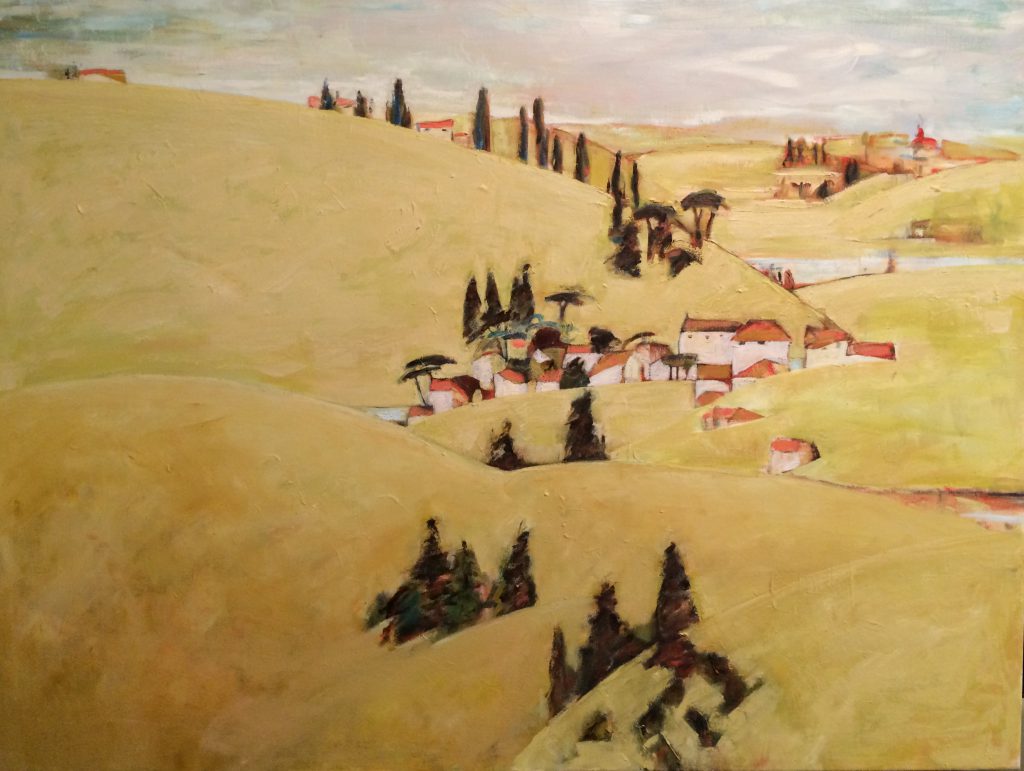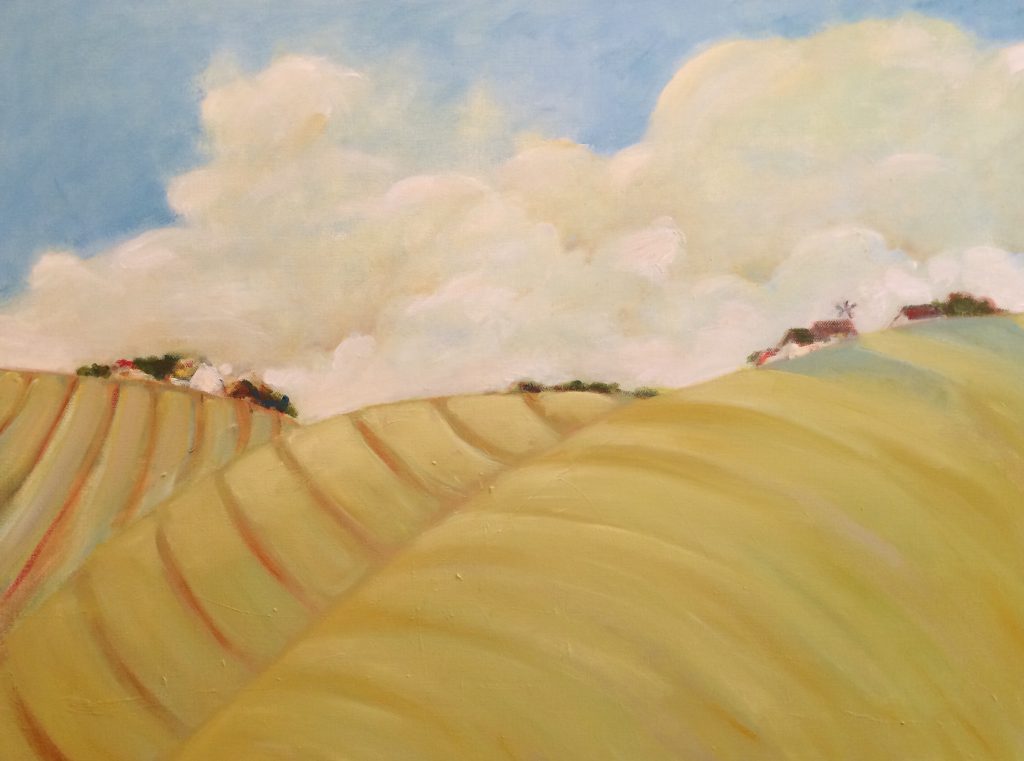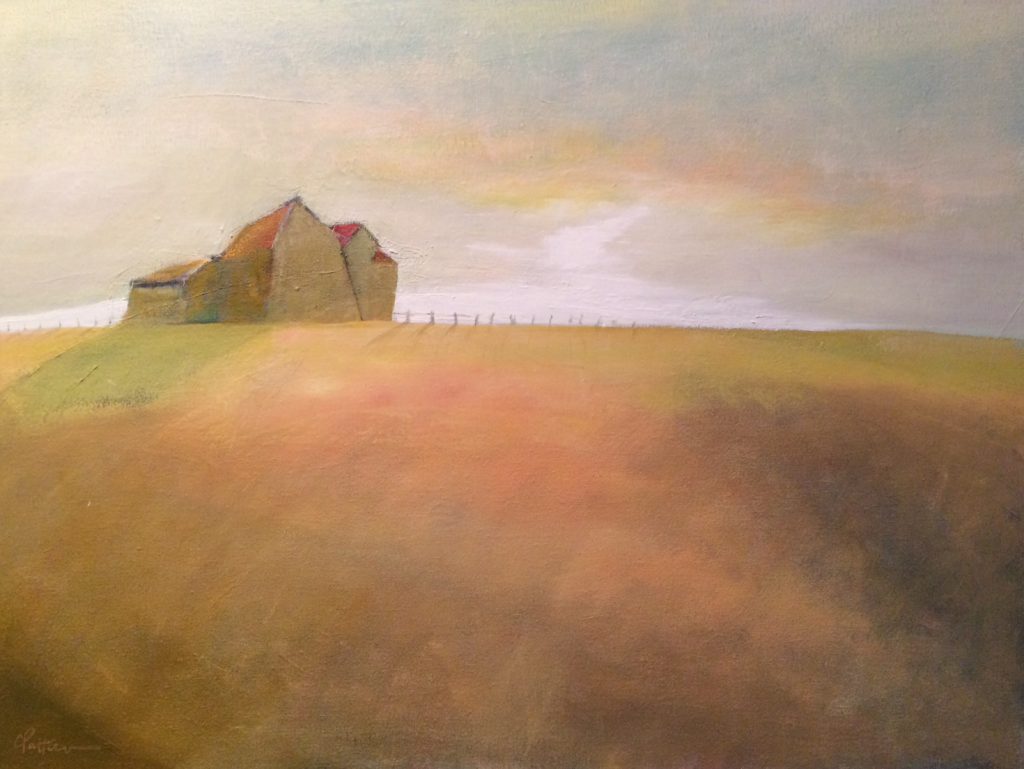LANDSCAPE AND MEMORY

I have found that I really enjoy the process of creating landscapes entirely from memory. After years of painting from reference photos, it is exciting to manipulate reality to fit how a memory looks in my mind’s eye.
These three landscapes represent three entirely different places in three entirely different times, and yet they live concurrently in my memory bank of images. By looking at them next to each other it is evident that my mind’s eye is wont to simplify and rub off the rough edges and keep only certain parts in my visual memory bank. I would suppose that everyone does much the same thing, but in my case, it becomes part of the creative process.
During the process of designing and creating these landscapes certain elements take precedence and come into prominence. In most cases I am unaware until well into the process what features will become key. By creating a two-dimensional image from a three-dimensional memory, I am forced at all times to decide which elements are needed in order to express the memory. However, I recognize when the image is complete, because the key elements have been brought into focus.
As an example, the painting, Tuscan Hills is in no way real. It is a massive, flat golden swath of land, holding the repetitive houses, rooftops, and tree shapes that are typical of that landscape. By simplifying the larger parts, the small yet significant elements of houses and trees became more important in the large vista. And since my memory of that beautiful landscape is of staunch cypress protecting clustered homes and vineyards, it becomes a more individual image, and nothing like a photograph in what it examines.

In all of my landscapes, the abstraction process creates a new view from and old memory. It is a challenge to make these memories come alive, and to be able to share them with others in such a complete way, is very satisfying.
For more information on these and all my other work go to www.cpdsgn.com
